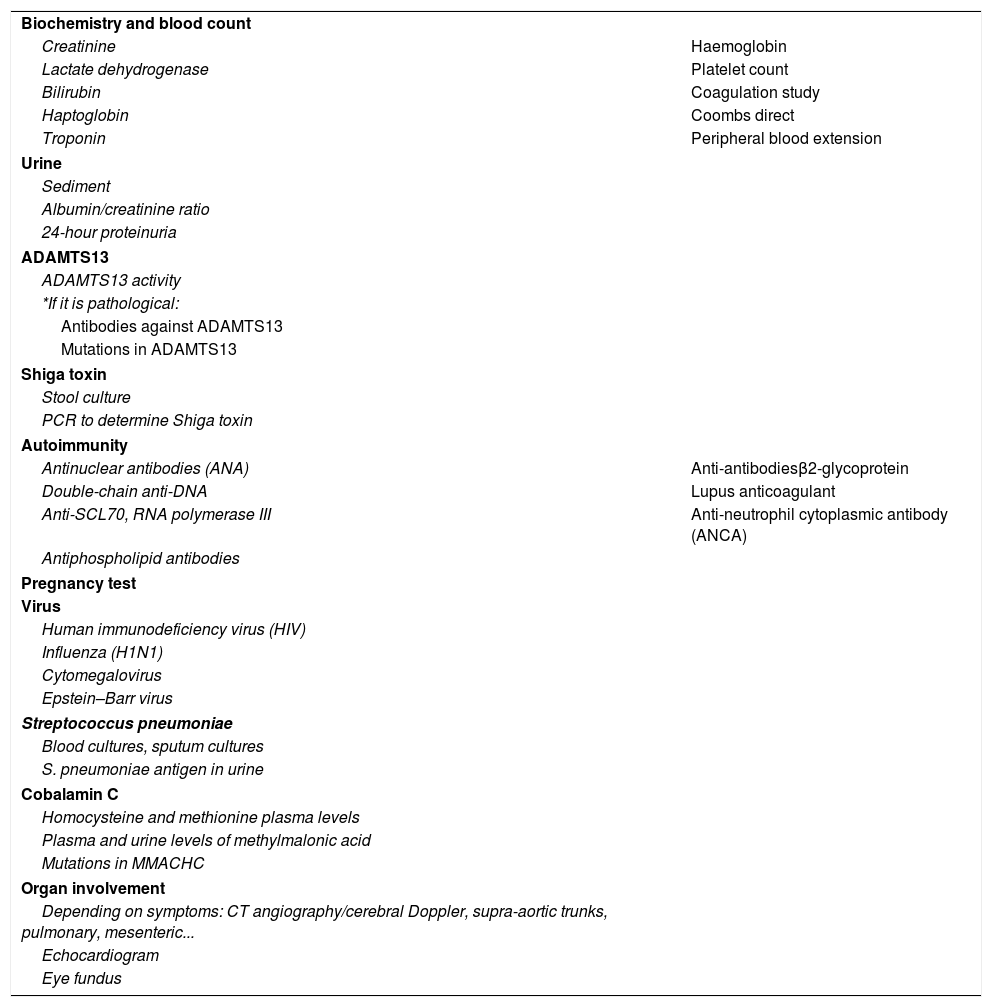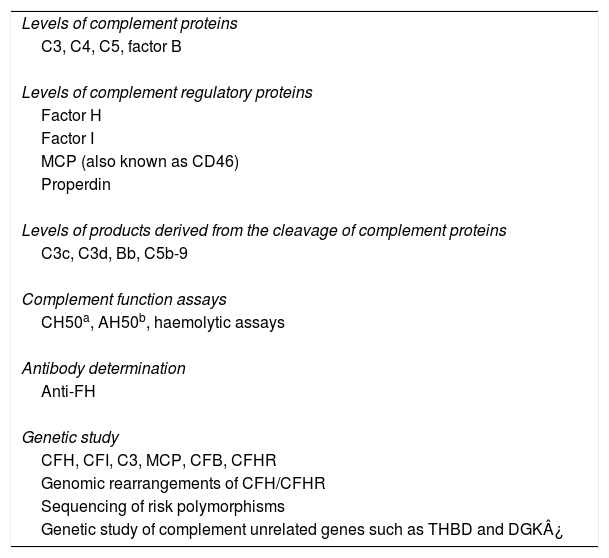Haemolytic uraemic syndrome (HUS) is characterized by microangiopathic haemolytic anaemia with acute kidney injury. It is currently classified into two main categories: Shiga-toxin producing E. coli-haemolytic uraemic syndrome (STEC-HUS) and atypical haemolytic uraemic syndrome (aHUS). Endothelial cell damage is the common pathway in HUS to developing thrombotic microangiopathy. Atypical HUS includes primary, secondary and aHUS due to metabolic diseases. In the majority of aHUS cases, hyperactivity of the alternative complement pathway plays a central role. Therefore, treatment is based on complement inhibitors like eculizumab, a drug that has revolutionized the natural history of the disease. Relapses are frequent after kidney transplant and thus confer a poor prognosis.
El síndrome hemolítico urémico (SHU) se caracteriza por una anemia hemolítica microangiopática con deterioro de función renal. Actualmente se clasifica en SHU asociado a toxina Shiga y SHU atípico, y el mecanismo común consiste en un daño grave del endotelio vascular que origina una microangiopatía trombótica. Dentro del SHU atípico se engloban formas primarias, secundarias y debidas a enfermedades metabólicas. En la gran mayoría de casos de SHU atípico, la hiperactividad de la vía alternativa del complemento juega un papel patogénico central. El tratamiento se basa en el bloqueo de la formación del complejo de ataque de membrana, molécula final de la vía alternativa del complemento, con eculizumab, que ha revolucionado la historia natural de la enfermedad. La recidiva de la enfermedad en el trasplante es frecuente y con muy mal pronóstico para la supervivencia renal.












